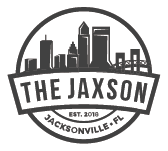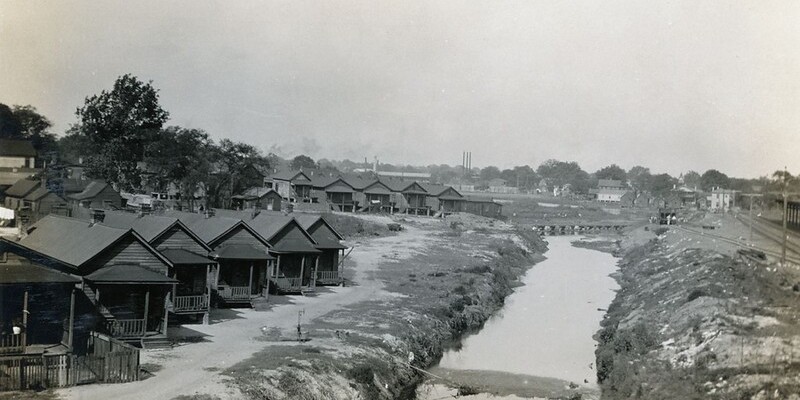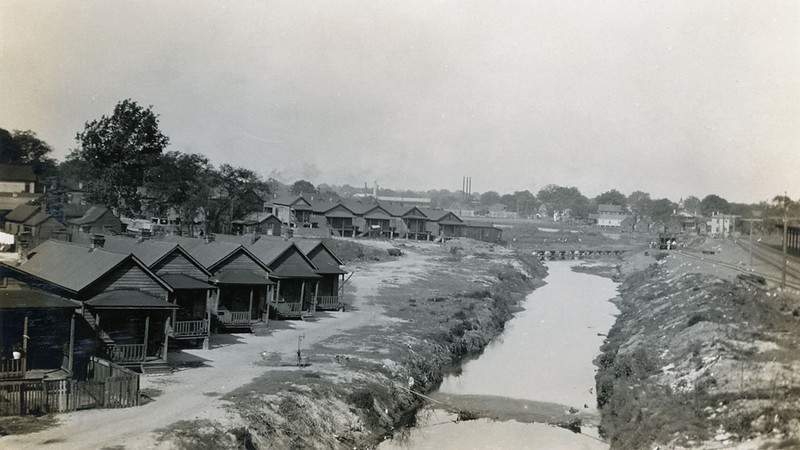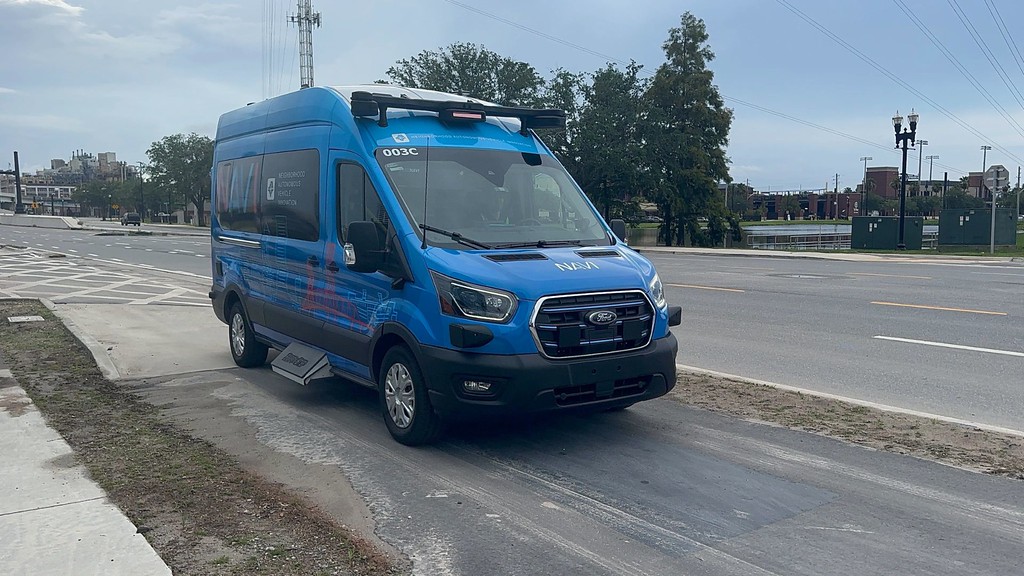
McCoys Creek is a tributary of the St. Johns River, flowing eastward from the Murray Hill neighborhood before emptying into the river near Downtown Jacksonville. Over the years, the creek has undergone significant changes, including channelization and rerouting. Today, it is the focus of an extensive restoration effort aimed at returning it to a more natural and resilient state.
Here is a collection of photographs taken by the city of Jacksonville in 1926, offering a glimpse of McCoys Creek nearly a century ago.

The Riverside Viaduct was a T-Shaped bridge used to carry automobile and streetcar traffic over the Florida East Coast Railway. It connected Riverside Avenue in Brooklyn with Broad Street in LaVilla. In 1921, the original north approach to the Acosta Bridge became an extension of the viaduct. During the early 1990s, the viaduct was replaced with a new Acosta Bridge interchange.

Sandwiched between Jacksonville’s major railroad depots and the riverfront, West Bay Street emerged as a place where early settlers arrived from Southern Greece and Turkey as sailors from ships that docked along the riverfront. Situated along West Bay Street, the district featured Greek-owned restaurants, fruit markets, hotels and bodegas serving the large transient population in the vicinity of the railroad terminals, riverfront docks and wholesale businesses supported by them. But after World War 2, urban renewal, technological changes in the logistics industry and the closure of the Downtown passenger rail terminal brought a decline to a neighborhood once characterized with international flair.

Once known as the Gateway City, Jacksonville was a major railroad center for more than 50 years. The Jacksonville Terminal Co. was a partnership made up of the rail lines that served the terminal complex, all of which still loom large in today’s transportation world: Florida East Coast Railway (started by Standard Oil principal Henry Flagler), Southern Railway (now Norfolk Southern Railway) and the Seaboard Coast Line Railroad Co. (now CSX Transportation). At its height, the Jacksonville Terminal Co. employed more than 2,000 people, making it the second-largest employer in the city at the time.

In 1801, Philip Dell received an 800-acre Spanish land grant to establish a plantation on the south side of McCoys Creek and the west bank of the St. Johns River. The site became known as Dell’s Bluff, named for the 16-foot-high bluffs lining the river’s western shore. During the Civil War, the property served as one of the few campsites for regiments of the U.S. Colored Troops during the Union occupation of Jacksonville.
Following the war, Confederate veteran Miles Price acquired the former plantation in 1868. The next year, he sold the southern 500 acres to John Murray Forbes for $10,000 in gold. Forbes developed the land into what became the neighborhood of Riverside. In 1869, Price platted the northern portion as the neighborhood of Brooklyn. Located near several rail lines, Brooklyn quickly became a hub for freedmen, freedwomen and their descendants.

Brooklyn was characterized by its narrow, gridded streets and carried a distinctly Northern name, even as its east-west streets were named after Confederate generals and its north-south streets after trees. By 1950, the neighborhood’s population had grown to over 6,000. However, by the decade’s end, the construction of Interstate 95 displaced a significant portion of its residents. This project marked the first of many urban renewal efforts over the next 60 years that would further reduce the neighborhood’s population and demolish many of its original structures.
Today, although much of Brooklyn has been replaced by modern development built within the last decade, a collection of historic buildings west of Park Street still remains, echoes of the neighborhood’s Gullah Geechee heritage.

Developed during the 1880s, Campbell Hill was a compact urban enclave tucked between rail yards on the north side of McCoys Creek, just west of the old Jacksonville Terminal passenger station.
The neighborhood was named after Alexander B. Campbell. A capitalist and entrepreneur, Campbell owned and operated Merryday & Paine’s Music Store, ran a fine printing business, and was active in real estate development. In 1885, he helped publish the first works of renowned composer Frederick Theodore Albert Delius.
Campbell Hill rose in prominence with the opening of Henry Flagler’s Jacksonville Terminal, becoming a desirable neighborhood for the workers who powered the city’s rail economy. Campbell Hill thrived until the construction of I-95 in 1957. Today, only a handful of buildings remain of this once vibrant community.

One of Campbell Hill’s most notable former residents was Frank Benjamin “Frankie” Manning. His mother, a dancer, left Jacksonville for New York in 1917 during the Great Migration. There, Manning learned to dance at an early age and later became a pioneer of the Lindy Hop and swing dancing. Over his illustrious career, he performed with legends like Duke Ellington, Count Basie and Ella Fitzgerald, and appeared in films including Jittering Jitterbugs, Hot Chocolate, Malcolm X, and Stomping at the Savoy.

Morgan Valentine Gress, born in 1875 in Jesup, Georgia, founded Gress Manufacturing. He was the son of George Valentine Gress, a wealthy lumber magnate and former Georgia state representative. The Gress family held cultural significance as well: George Gress’s elaborate home is said to have inspired Tara, the iconic plantation in Gone With the Wind, to which the family was reportedly related through author Margaret Mitchell. George also purchased and donated the massive cyclorama painting The Battle of Atlanta to the city of Atlanta, housing it in a specially built structure in Grant Park. At 42 feet tall and 358 feet in circumference, it remains one of the largest paintings in the U.S.
Morgan Gress reportedly fell out of favor with his father after marrying Georgia native Eugenia Stephens, leading him to leave the family business. He founded his own wholesale lumber company in Georgia, later relocating it to Jacksonville in 1907. Settling in Riverside, Gress became a prominent civic figure in Jacksonville before passing in 1961. Today, Bellingham Marine Industries occupies the site of his former planing mill along McCoys Creek.


Prior to its completion, Campbell Hill was physically separated from Brooklyn. After the opening of the bridge and Myrtle Avenue streetcar line, Myrtle Avenue developed into a commercial center for the Campbell Hill neighborhood.

Prior to the Civil War, Colonel Lucius Augustus Hardee owned a plantation named Rural Home, along McCoys Creek. Located one mile west of the St. Johns River, Hardee’s plantation produced long staple cotton. Colonel Hardee was also a cotton broker associated with his uncle’s firm in Savannah, Georgia, Noble A. Hardee, Son and Co. After the war, Hardee built a new “colonial style” residence on the site of the former plantation named Honeymoon.

Originally known as the St. Johns River Bridge, the “Yellow Monster” was eventually named for City Councilman St. Elmo W. Acosta, who convinced voters to approve the bond issue to build the bridge. Tolls were charged until 1940, earning more than $4 million for the city. Due to high maintenance costs and increased traffic flow, it came down in the 1990’s to make way for the Acosta Bridge we know today.
The Florida East Coast Strauss Trunnion Bascule Bridge, on the right, is the oldest remaining bridge crossing the St. Johns River. It was originally constructed by oil magnate Henry M. Flagler, to provide better access to South Florida and served as the final chapter of Jacksonville’s decline as a major tourist center. This 1925 bascule bridge replaced the original swing-span bridge that opened on January 5, 1890.







